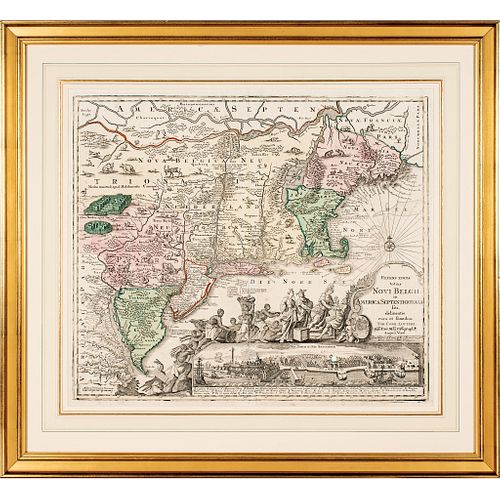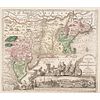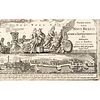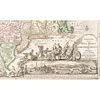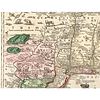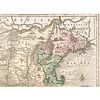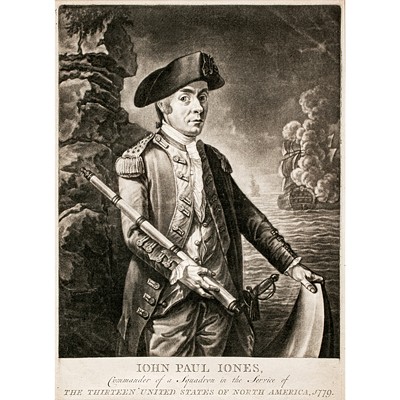c 1760 Hand-Colored Map, the American Northeast, Recens Edita totius Novi Belgii
Lot 301
Categories
Estimate:
$3,500 - $4,500
Absentee vs Live bid
Two ways to bid:
- Leave a max absentee bid and the platform will bid on your behalf up to your maximum bid during the live auction.
- Bid live during the auction and your bids will be submitted real-time to the auctioneer.
Bid Increments
| Price | Bid Increment |
|---|---|
| $0 | $10 |
| $200 | $20 |
| $300 | $25 |
| $500 | $50 |
| $1,000 | $100 |
| $2,000 | $200 |
| $3,000 | $250 |
| $5,000 | $500 |
| $10,000 | $1,000 |
| $20,000 | $2,000 |
| $30,000 | $2,500 |
| $50,000 | $5,000 |
| $100,000 | $10,000 |
| $200,000 | $20,000 |
| $300,000 | $25,000 |
| $500,000 | $50,000 |
About Auction
By Early American History Auctions
Jan 23, 2021
Set Reminder
2021-01-23 12:00:00
2021-01-23 12:00:00
America/New_York
Bidsquare
Bidsquare : Early American History Auction of Autographs, Americana, Political & Maps
https://www.bidsquare.com/auctions/early-american-history-auctions/early-american-history-auction-of-autographs-americana-political-maps-6311
311 Lots of Rare, Historic Autographs, Americana, Civil War Era, George Washington, Abraham Lincoln, Slavery & Black History, Revolutionary War Era, Colonial America, Federal Period, War of 1812, Colonial Currency, Indian Peace Medals & more... Early American History Auctions auctions@earlyamerican.com
311 Lots of Rare, Historic Autographs, Americana, Civil War Era, George Washington, Abraham Lincoln, Slavery & Black History, Revolutionary War Era, Colonial America, Federal Period, War of 1812, Colonial Currency, Indian Peace Medals & more... Early American History Auctions auctions@earlyamerican.com
- Lot Description
Historic Maps
Gorgeous Map of the American Northeast With "Neu Jorck sive Neu Amsterdam" with Cityscape Inset
c. 1760 mid 18th Century Colonial Era, Hand-Colored Engraved Map of the American Northeast titled, "Recens Edita totius Novi Belgii, in American Septentrionali," by Tobias Conrad Lotter, Germany, Framed, Choice Extremely Fine.
Recens Edita totius Novi Belgii, in American Septentrionali
c. 1760 Colonial Era Map of the American Northeast Double-Sheet Map measuring 23.5" x 20.5" (by sight), titled, "Recens Edita totius Novi Belgii, in American Septentrionali." A superbly attractive map of the Northeastern seaboard of the United States. This is the 5th state (with "Boston" spelled correctly), of the Seutter Map first-issued in 1730, itself based on Jan Jansson's Map of 1651. Overall, this colorful Map is in choice condition with its Double-Sheet vertical centerfold line as made, and a barely visible sealed short 2" vertical tear hidden at mid-bottom edge.
This stunning, beautiful Engraved Map is part of the Jansson-Visscher series. A highly decorated and embellished Map of New England that offers a fascinating portrait of Colonialism in the middle of the 18th century. The Map itself shows the area from the Canadian border down to Virginia as a land of plenty, lush with forests, and most notably with much wildlife. Scattered illustrations of many animals of all types are seen including; Turkey, Fox, Wolves, other Birds, Moose, Dear, Bears, Horse, Cows and Rabbits are comprised about the fauna of the New World. Appearing as the residents of the Colonies, these animals visually displace the actual residents Native American Indians who appear, instead, in the Title Cartouche at the bottom of the Map. In this illustration, both Native American Indians and African Slaves carry wheat, barrels of tobacco, and other commodities, with Greek mythological figures Hermes, Athena, and Hera, who are waiting on the Hand of the English King, George II shown seated on a chair.
The lower Cartouche features the "Restitutio" Cityscape View of New York City in the lower right, titled "NEU JORCK sive NEU AMSTERDAM" so-called for its dramatic depiction of the restitution of Dutch power in the City in 1673. Dutch soldiers can be seen marching along the quay on their way to taking the fort. The Dutch renamed the Colony "New Orange," but the restitution lasted only one year. In 1674 the English retook New Orange, named it "New York," and held it until the American Revolution. The wall after which Wall Street is named is visible in the right side of the view. Exceptional in eye appeal, fresh, clean with outstanding Hand-Color and an exceptional plate impression. Professionally matted and framed under UV Plexiglas in a gorgeous Gold-Gilt painted wood frame measuring fully to 32" wide x 29.25" tall, being of museum quality, ready to display.
Tobias Conrad Lotter (1717 - 1777) was a German engraver and map publisher. Lotter was the son of a baker and city guardsman, but married Euphrosina (1709-1784) Seutter, elder daughter of the prominent map publisher Matthaus Seutter. He began working at his is father-in-law's map business about 1740.
Between 1740 and 1744 he produced, under Seutter's imprint, the Atlas minor, Praecipua orbis terrarum imperia, regna et provincias, Germania potissimum tabelli. Upon Seutter's death, in 1757, the firm's stock was taken over by his son, Albrecht Karl Seutter (1722-1762), who himself died in 1762, just a few years later.
The remaining Suetter map plates were subsequently divided between Lotter and the publisher Johan Mitchell Probst (1727 - 1776). With the support of his sons, Matthaus Albrecht (1741-1810), Georg Friedrich (1744-1801) and Gustav Conrad (1746-1776), Tobias Conrad Lotter succeeded in building on the economic success and professional reputation of his father-in-law. In time, Lotter became one of the most prominent mid-18th century map publishers working in the German school.
After Lotter's death in 1777, the business was taken over by his two eldest sons, who, lacking their father's business acumen, presided over the firm's slow decline. It was nonetheless passed on to a subsequent generation of Lotters, Matthaeus Albrecht Lotter's sons, Gabriel (1776-1857) and Georg Friedrich (1787-1864), who pushed it into further decline until it faded out in the early-19th century.
- Shipping Info
-
Early American provides in-house worldwide shipping. Please contact us directly if you have questions about your specific shipping requirements.
-
- Buyer's Premium



 EUR
EUR CAD
CAD AUD
AUD GBP
GBP MXN
MXN HKD
HKD CNY
CNY MYR
MYR SEK
SEK SGD
SGD CHF
CHF THB
THB